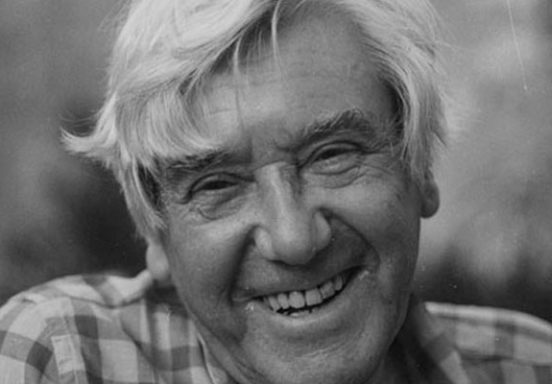Matta, Roberto – Chile
1911-2002 | Latin American Art

Roberto Sebastián Matta Echaurren, known as Roberto Matta, was born into a family of French-Basque origin in Santiago de Chile on 11th November 1911.
Graduating in architecture in 1932, he practised his profession in Santiago de Chile for a year, after which he decided to abandon everything and set sail for Europe.
His travels led him to settle in Paris in 1934, where he would work in the studio of the renowned architect Le Corbusier.
During his stays in Madrid he was in touch with Spanish intellectuals and met the poets Rafael Alberti and Federico García Lorca, declaring himself a follower of the Spanish poetry and literature of the Generation of ’27.
In 1936 he settled in London, where he worked as an architect and associated with artists and intellectuals like Henry Moore, René Magritte and Roland Penrose. He heard about Marcel Duchamp’s aesthetic theories and concept of spatiality for the first time. The Civil War was to break out in Spain during the same year, with this having a particular impact on him, especially after learning about the death of García Lorca and the circumstances behind it.
Having worked in Le Corbusier’s studio, he was involved in creating the Spanish Pavilion for the Universal Exposition in Paris, where he saw Picasso’s Guernica first-hand.
In 1938 he joined the surrealist movement in Paris, took part in exhibitions such as the International Surrealist Exhibition at the Gallery of Beaux-Arts in Paris, and spent time with Salvador Dalí, André Breton and Marcel Duchamp, with whom he would stay in contact.
In 1939 he lived for a time with Pablo Neruda, after which he moved to New York on the outbreak of World War II, along with Yves Tanguy and Duchamp himself.
From 1963, his relationship with the Ibero-American countries narrowed, especially with Chile and Cuba, as did his commitment to the political and social situation.
After purely architectural beginnings, it was not until 1937 when Matta started to develop his artistic side. Roberto Matta’s work is based on surrealism and psychic automatism to free his imagination, and contains a large component of metaphysical painting.
Like other surrealists, Matta was interested in exploring the inner world, science, the theory of relativity and the discovery of space-time, the fourth dimension, the representation of movement and the invisible through art. However, more than exploring the unconscious and Freudian theories, Matta was interested in depicting the invisible, inventing it and creating new spaces out of references to nature.
Within this exploration, he makes “landscapes of the interior” or what he called “psychological morphologies” or “Inscapes”. In these works, he explores the dream world and the internal drives of human beings through the invention of spaces and landscapes that he conceived as projections of psychological states, and they can remind us of microorganisms from nature, plants, the inside of the human body, or outer space.
He was also interested in space and movement, exploring these theories while trying to depict the representation of the fourth dimension. This proposal reaches its maximum splendour with the creation of the “open cube”.
After creating his own language based on depicting the invisible, the interior, micro- and macro-cosmos, spaces and movement, with work inspired by metaphysics, the historical events that he lived through led to a change in his work, which was mature by this stage.
Despite his relevance and great contribution to art thanks to the technical experimentation he uses in his works, for Matta the most important thing was always the message. For this reason, without completely abandoning abstract surrealism, he makes works with a more figurative nature, in which he includes the human figure and other anthropomorphic forms. Here, we see his clear intention of denouncing and creating awareness in the viewer, making the message reach a wider audience more accurately.
As someone who avidly soaked up influences, from the start Matta’s works were strongly influenced by the poets of the Generation of ’27, in particular Federico García Lorca and Rafael Alberti, by the avant-garde movements of the 1920s and 1930s, and especially by the theoretical and artistic proposals offered by Marcel Duchamp, which Matta transfers to his work in his own particular way.
His origins are reflected in his work, in which he uses pre-Columbian mythological themes and South American history. Matta fights against globalisation (which he called “Californization”), the human dissociation with nature, and the loss of Amerindian identity. In his final stage, his works are filled with references to traditional indigenous culture and native peoples, both from Latin America and from other civilisations, such as the Greek or Egyptian.
Silvia Sánchez Ruiz
Curator
Matta: Centenario 11.11.11. [Online catalogue]. Centro Cultural Palacio de La Moneda, Santiago de Chile, 2011-2012. Available at: https://issuu.com/centroculturallamonda/docs/catalogo_web [date of access: 04/05/2023]
Matta: Este lado del mundo [On-line catalogue]. Centro Cultural Matta Embajada de Chile en Argentina. 2015-2016. Available at: https://es.slideshare.net/CCMATTA/matta-este-lado-del-mundo-58203039 [date of access: 04/05/2023]
Matta 100 [On-line catalogue]. Museo Bellas Artes, 2011. Available at: https://www.mnba.gob.cl/sites/www.mnba.gob.cl/files/images/articles-9352_archivo_01.pdf [date of access: 04/05/2023]
De Santiago, Enrique. “Matta en el inverso del universo con sus amigos detrás del espejo”. Ciencias Sociales y educación, Vol. 3, No. 5. Universidad de Medellín. 2014. ISSN: 2256-5000. Pp: 183-192. Available at: https://dialnet.unirioja.es/servlet/articulo?codigo=7840152&orden=0&info=link [date of access: 04/05/2023]
Osorio, Amparo; Márquez Cristo, Gonzalo. “Un estallido interior”. Revista Común Presencia. Available at: http://comunpresenciaentrevistas.blogspot.com/2006/11/roberto-matta-entrevista-en-roma.html [date of access: 04/05/2023]
RELATED PROGRAMS